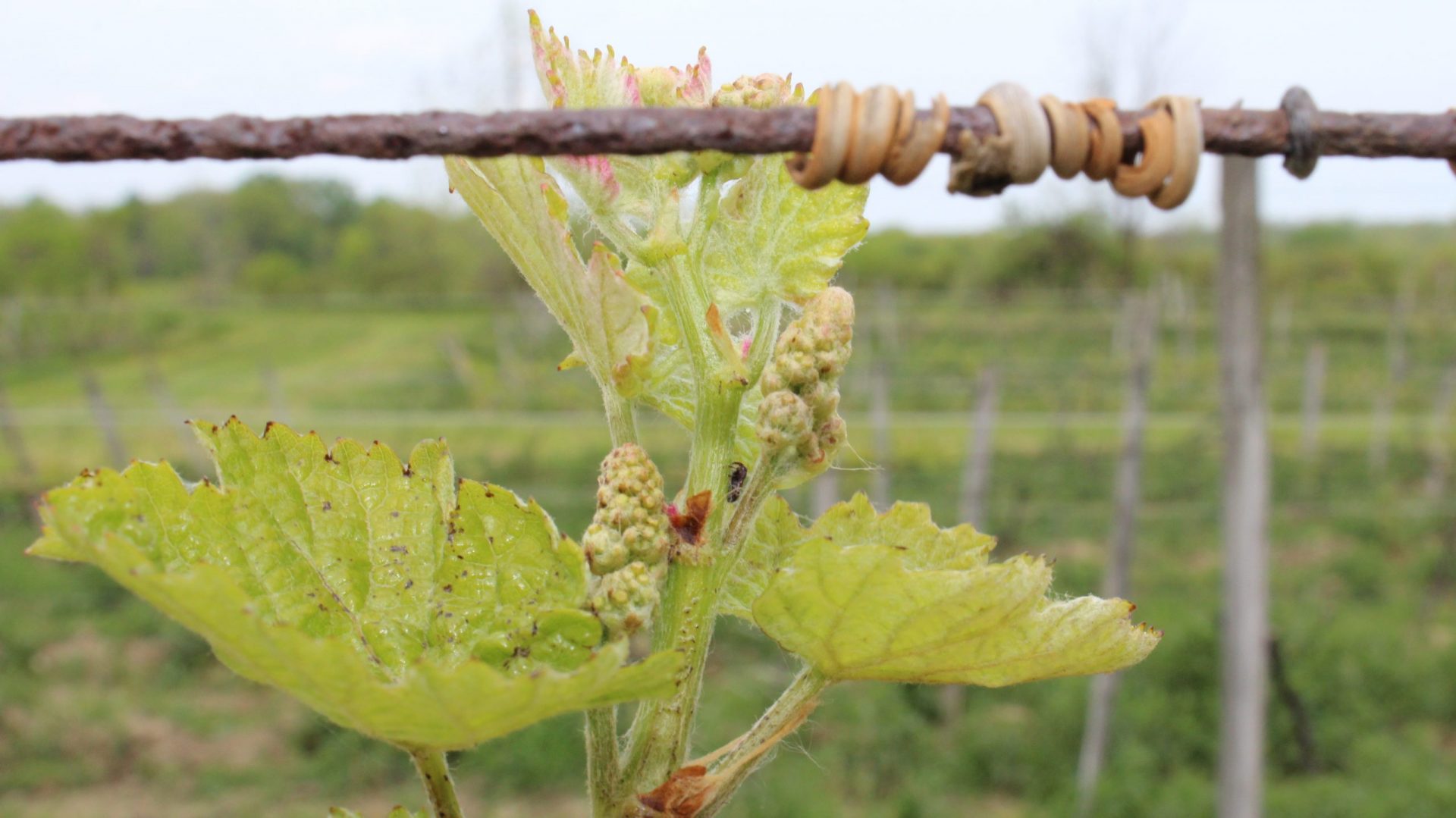Peer-reviewed Publications
2023
Justus, E. J. and E. Y. Long. 2023. Evaluating the impact of cultivar selection on carrot weevil (Coleoptera:Curculionidae) damage and foliar insect pest assemblages in carrot. Journal of Economic Entomology,
https://doi.org/10.1093/jee/toad196
Wodzicki, L. M., L. V. Madden, E. Y. Long, H. Zhu, and M. L. Ivey. 2023. Validation of a laser-guided intelligent sprayer for disease and insect management on grapes. American Journal of Enology and Viticulture,
https://doi.org/10.5344/ajev.2023.23013
Hong, Z., A. P. Michel, and E. Y. Long. 2023. Optimizing a rapid LAMP assay for discrimination of Drosophila suzukii (Diptera: Drosophilidae) from common drosophilids captured in monitoring traps from the Midwest, United States. Journal of Economic Entomology, toad105,
https://doi.org/10.1093/jee/toad105
2019
Justus, E. J. and E. Y. Long. 2019. Biology and management of the carrot weevil (Coleoptera: Curculionidae) in North America. Journal of Integrated Pest Management 10(1), pmz007 https://doi.org/10.1093/jipm/pmz007
2017
Pisa, L., D. Goulson, E. Yang, D. Gibbons, F. Sánchez-Bayo, E. Mitchell, A. Aebi, J. van der Sluijs, C. J. K. Macquarrie, C. Giorio, E. Y. Long, M. McField, M. B. van Lexmond, and J. M. Bonmatin. 2017. An update of the Worldwide Integrated Assessment (WIA) on systemic insecticides. Part 2: impacts on organisms and ecosystems. Environmental Science and Pollution Research. DOI: 10.1007/s11356-017-0341-3
Krupke, C. H., J. D. Holland, E. Y. Long and B. D. Eitzer. 2017.Planting of neonicotinoid-treated maize poses risks for non-target organisms over a wide area without consistent crop yield benefit. Journal of Applied Ecology DOI: 10.1111/1365-2664.12924.
2016
Parker, N. S., N. R. Anderson, D. S. Richmond, E. Y. Long, K. A. Wise, and C. H. Krupke. 2016. Larval Western bean cutworm feeding damage encourages the development of Gibberella ear rot on field corn. Pest Management Science. DOI:10.1002/ps.4313
Long, E. Y. and C. H. Krupke. 2016. Non-cultivated plants present a season-long route of pesticide exposure for honey bees. Nature Communications 7:11629.
2015
Krupke, C. H., and E. Y. Long. 2015. Intersections between neonicotinoid seed treatments and honey bees. Current Opinion in Insect Science 10: 8-13.
Long, E. Y., and D. L. Finke. 2015. Predators indirectly reduce the prevalence of an insect-vectored plant pathogen independent of predator diversity. Oecologia DOI: 10.1007/s00442-014-3194-1
2014
Bonmatin, J-M, C. Giorio, V. Girolami, D. Goulson, D. Kreutzweiser, C. Krupke, M. Liess, E. Long, M. Marzaro, E. Mitchell, D. Noome, N. Simon-Delso, and A. Tapparo. 2014. Environmental fate and exposure; neonicotinoids and fipronil. Environmental Science and Pollution Research DOI: 10.1007/s11356-014-3332-7.
de Oliveira, C. F., E. Y. Long, and D. L. Finke. 2014. A negative effect of a pathogen on its vector? A plant pathogen increases the vulnerability of its vector to attack by natural enemies. Oecologia 174: 1169-1177.
Long, E. Y., and D. L. Finke. 2014. The contribution of predator identity to the suppression of herbivores by a diverse predator assemblage. Environmental Entomology 43: 569-576.
Simon-Delso, N, V. Amaral-Rogers, L. P. Belzunces, J. M. Bonmatin, M. Chagnon, C. Downs, L. Furlan, D. W. Gibbons, C. Giorio, V. Girolami, D. Goulson, D. P. Kreutzweiser, C. H. Krupke, M. Liess, E. Long, M. McField, P. Mineau, E. A. D. Mitchell, C. A. Morrissey, D. A. Noome, L. Pisa, J. Settele, J. D. Stark, A. Tapparo, H. Van Dyck, J. Van Praagh, J. P. Van der Sluijs, P. R. Whitehorn, and M. Wiemers. 2014. Systemic insecticides (neonicotinoids and fipronil): trends, uses, mode of action and metabolites. Environmental Science and Pollution Research DOI: 10.1007/s11356-014-3470-y.
van der Sluijs, J. P., V. Amaral-Rogers, L. P. Belzunces, M. F. I. J. Bijleveld van Lexmond, J-M. Bonmatin, M. Chagnon, C. A. Downs, L. Furlan, D. W. Gibbons, C. Giorio, V. Girolami, D. Goulson, D. P. Kreutzweiser, C. Krupke, M. Liess, E. Long, M. McField, P. Mineau, E. A. D. Mitchell, C. A. Morrissey, D. A. Noome, L. Pisa, J. Settele, N. Simon-Delso, J. D. Stark, A. Tapparo, H. Van Dyck, J. van Praagh, P. R. Whitehorn, and M. Wiemers. 2014. Conclusions of the Worldwide Integrated Assessment on the risks of neonicotinoids and fipronil to biodiversity and ecosystem functioning. Environmental Science and Pollution Research DOI: 10.1007/s11356-014-3222-7.
2012
Fill, A., E.Y. Long, and D. L. Finke. 2012. Non-consumptive effects of a natural enemy on a non-prey herbivore population. Ecological Entomology 37: 43-50.
Editor-reviewed Publications & Short Reports
2023
Long, E. Y. My unexpected (but complete) metamorphosis into an entomologist. American Entomologist 68(2):32-34
https://doi.org/10.1093/ae/tmac034
2020
Long, Elizabeth Y., and Emily J. Justus. “Efficacy of Soil-Applied Insecticides Against Carrot Weevil in Fresh Parsley, 2017.” Arthropod Management Tests 45.1 (2020): tsaa091.

